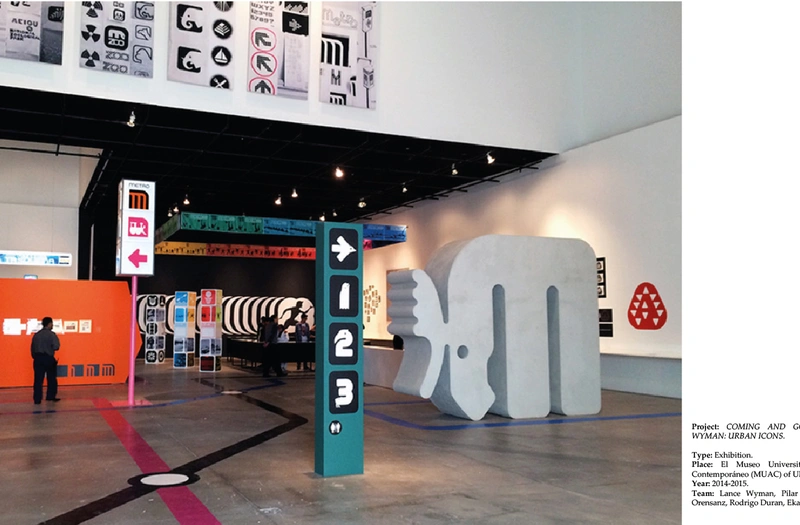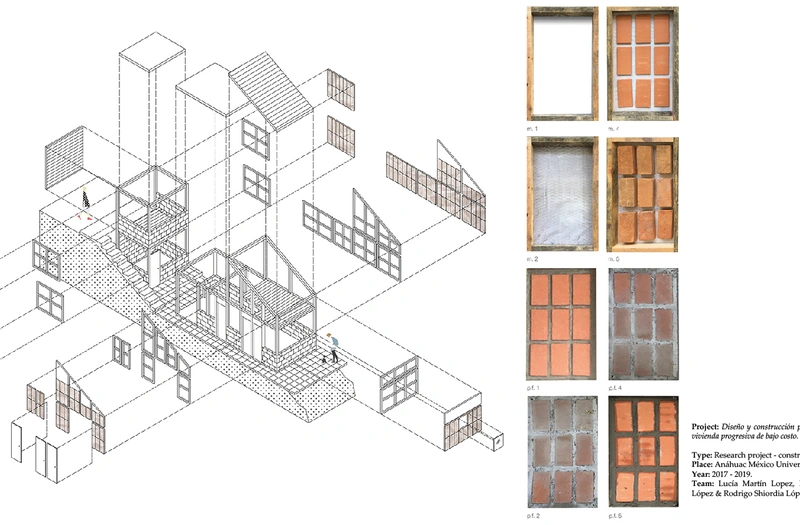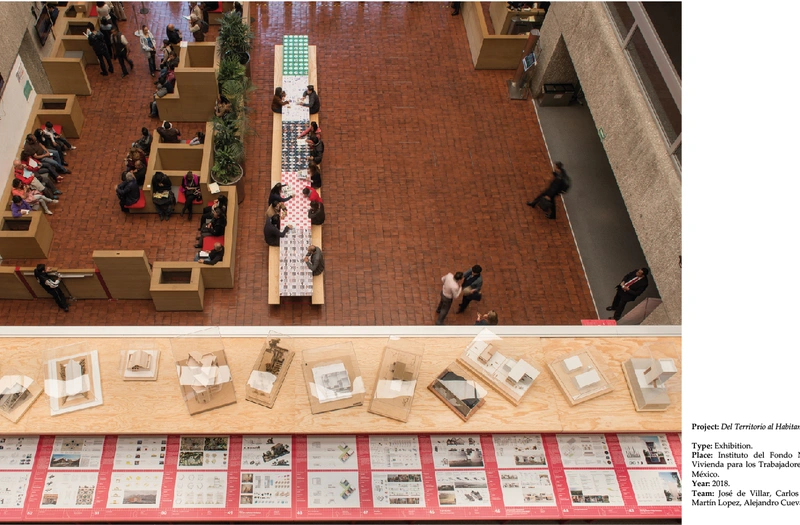The Casas de la Asegurada were founded in 1956 by the Mexican Social Security Institute (IMSS, after the Spanish initials for Instituto Mexicano del Seguro Social) as a tool to improve the social security of Mexican families through women, who were considered the key family unifier. They proposed that, through women’s acquisition of specific knowledge, these could guide Mexican families to a better life quality, emphasizing family ties, community life at a neighborhood scale, everyday life, and care. The first Casa de la Asegurada was inaugurated in 1956 in San Bartolo Naucalpan, west of Mexico City. By the end of 1959, 13 Casas de la Asegurada Mexico City and 73 in the rest of the country were operating. In 1960, the Casas de la Asegurada started being called Centros de Seguridad Social y Bienestar Familiar, providing educational spaces to beneficiaries’ families, without being exclusive for women. Currently, many of the first users of the Casas de la Asegurada still call them this way, even though they have been renamed through time. This is because for them, these houses were a symbol of empowerment, access to public spaces, a tool for relationships construction, and access to other environments apart from the reproductive one. This is why the creation and study of these facilities dedicated to women is key for the development of diverse, inclusive, and thriving neighborhoods until they become the accepted rule and not the exception. The purpose of the Casas de la Asegurada was to help the economic, spiritual, and social freedom of women, specially by the means of education and use of available resources and elements, to satisfy the most urgent needs of the family. The importance of these Casas stands out, as the IMSS conceived them as part of the facilities of important housing complexes in Mexico City, such as the Unidad Habitacional Santa Fe from Mario Pani and Salvador Ortega; the Unidad Independencia from Alejandro Prieto, Jose María Gutiérrez, and Pedro F. Miret; and the Unidad Morelos from Guillermo Rossell de la Lama; among others.
To guarantee facilities that contribute in the development of better neighborhoods and promote women’s sorority, empowerment in everyday life, and gender equality in Mexico, it is important to design and build new programs that encourage the dismantling of current gender roles. The Casas are buildings without innovative spatial or material proposals, but with an impeccable operation that allows great flexibility for the development of different activities thanks to the standardization and simpleness of their construction. They adapt optimally to the housing complexes in which they are located, sometimes going almost unnoticed, offering activities for the new complexes and the neighborhoods in which they are inserted, acting as a bridge and seamlessly blending a new community. However, it is important to note the symbolic value of these buildings for women in public spaces, as they allowed to change their organization and hierarchy, so that women could occupy them as social agents.
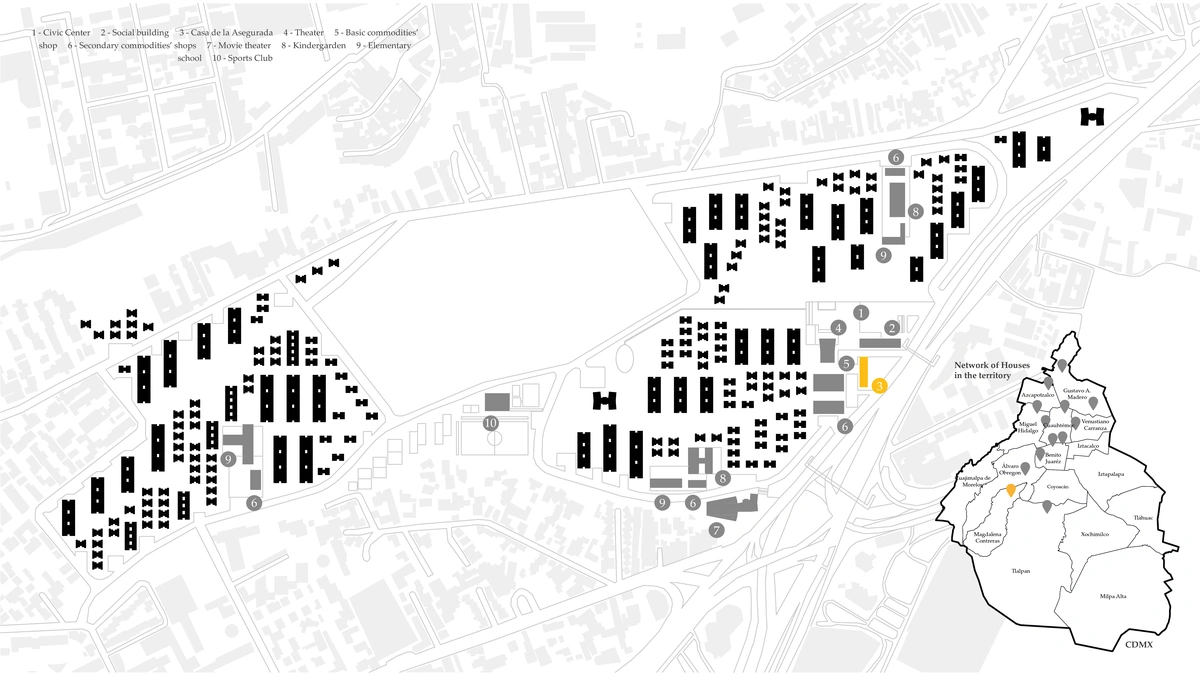
Unidad Independencia site plan locating its facilities; map of Mexico City locating the existing Casas de la Asegurada.
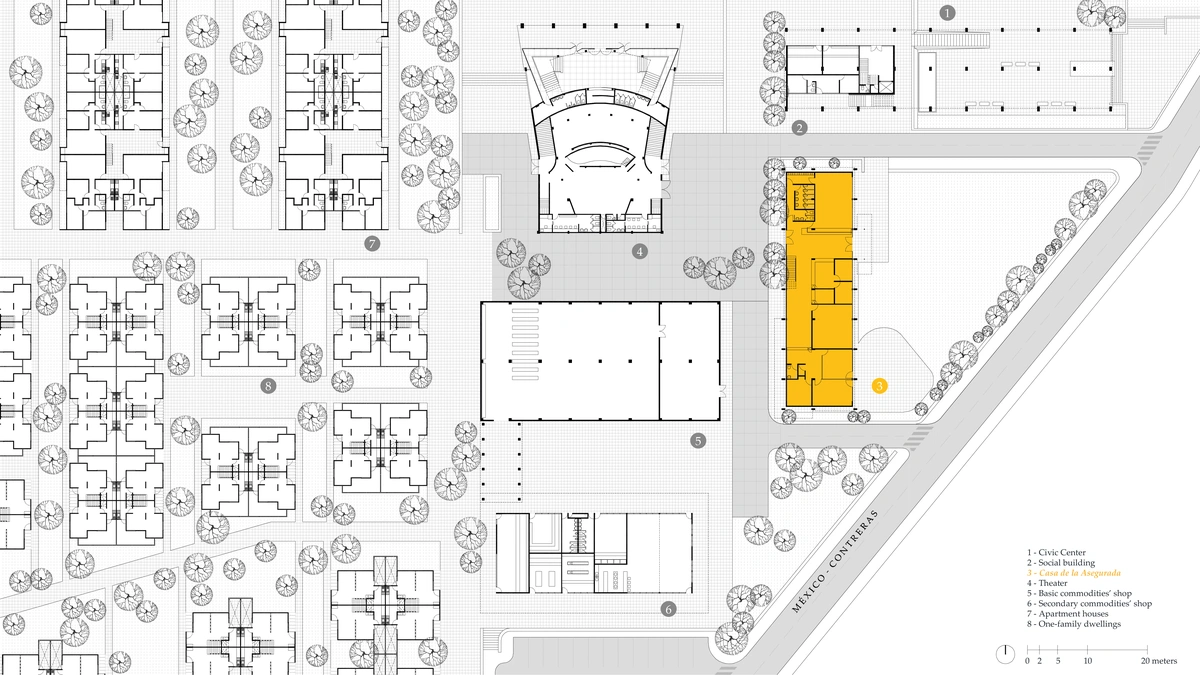
Ground floor plan of the Casa de la asegurada, other facilities, and some housing units of the complex.
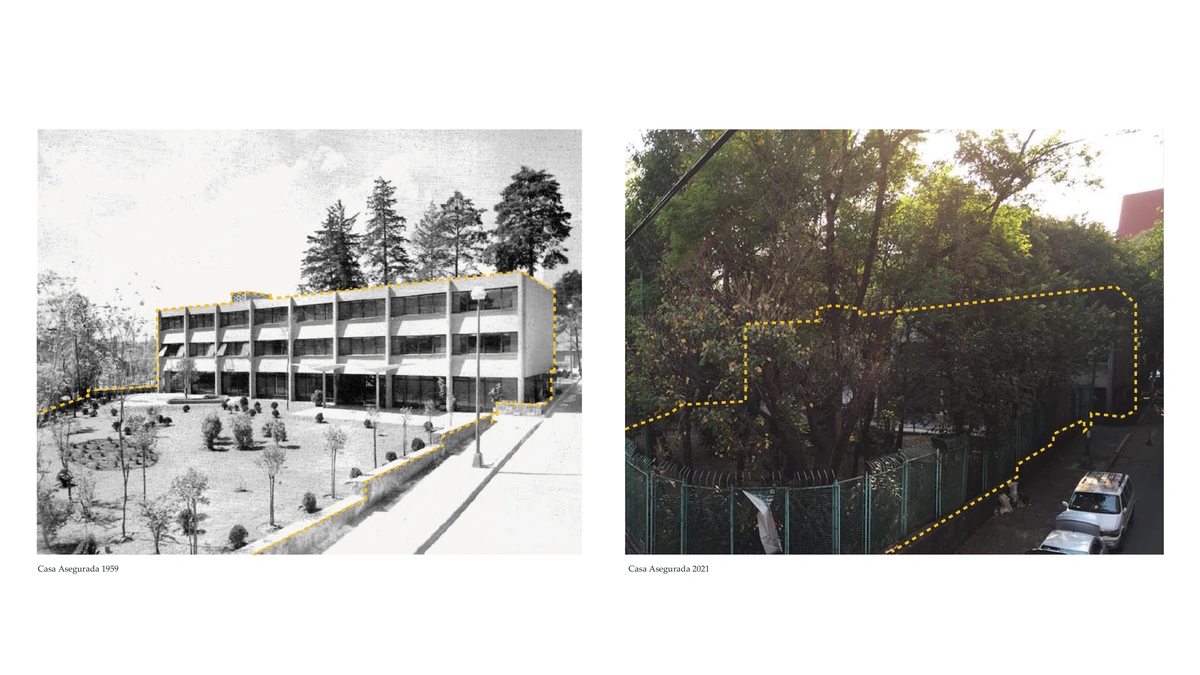
Photos of Casa de la Asegurada in 1959 and 2021.
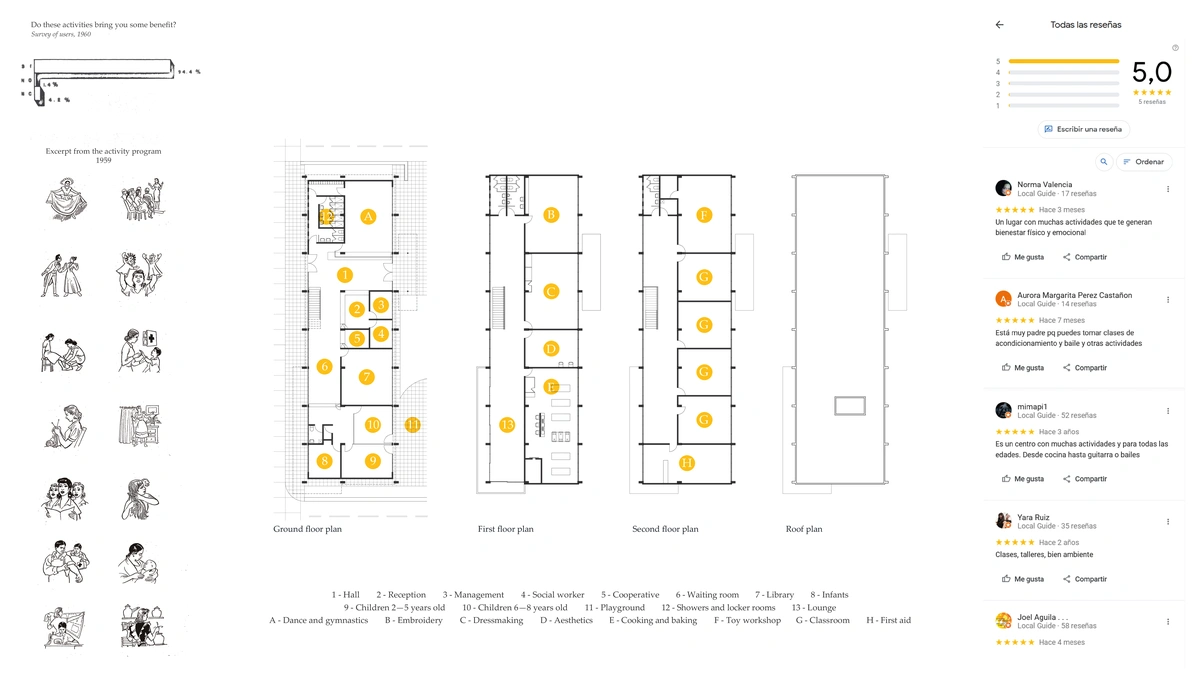
Casa de la Asegurada floor plans, and 1959 and 2022 surveys.
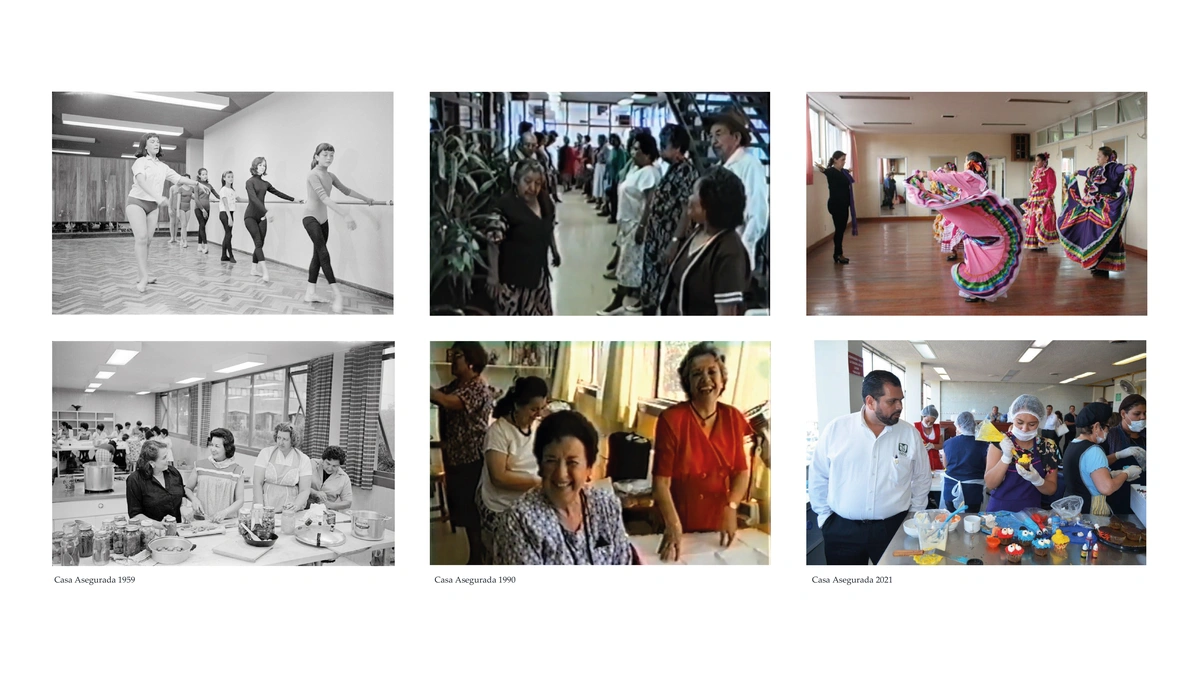
Photos of activities at the Casa de la Asegurada in 1959, 1990, and 2021.
Rodrigo Durán López. Professor – associate researcher. Faculty of Architecture, Universidad Anáhuac México.
Lucía Martín López. Professor – researcher. School of Architecture Art and Design, Tecnologico de Monterrey.
